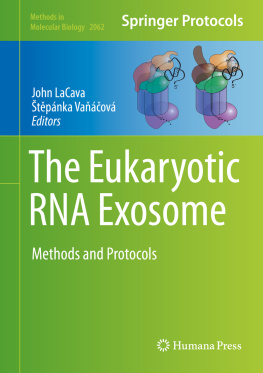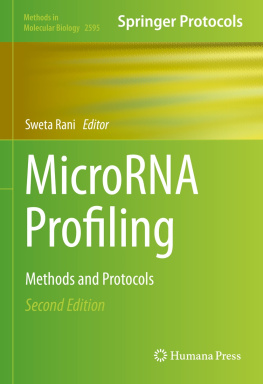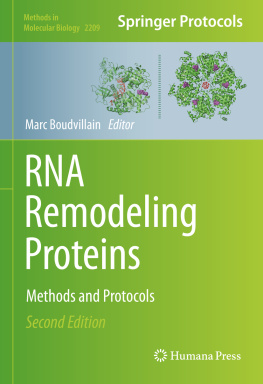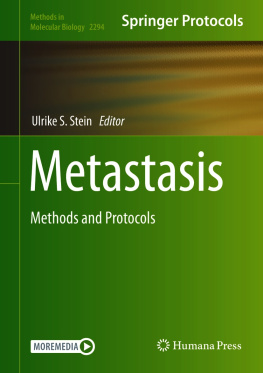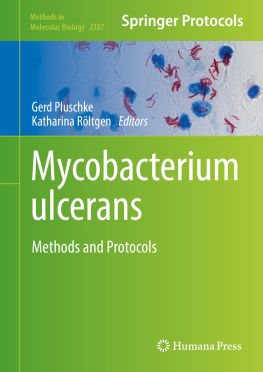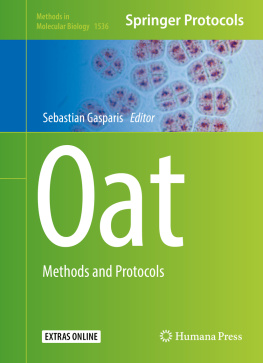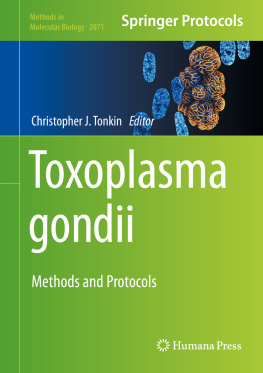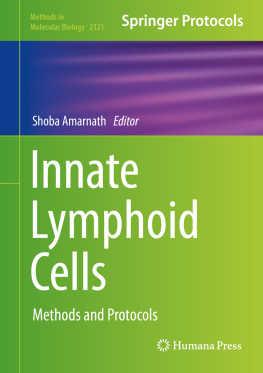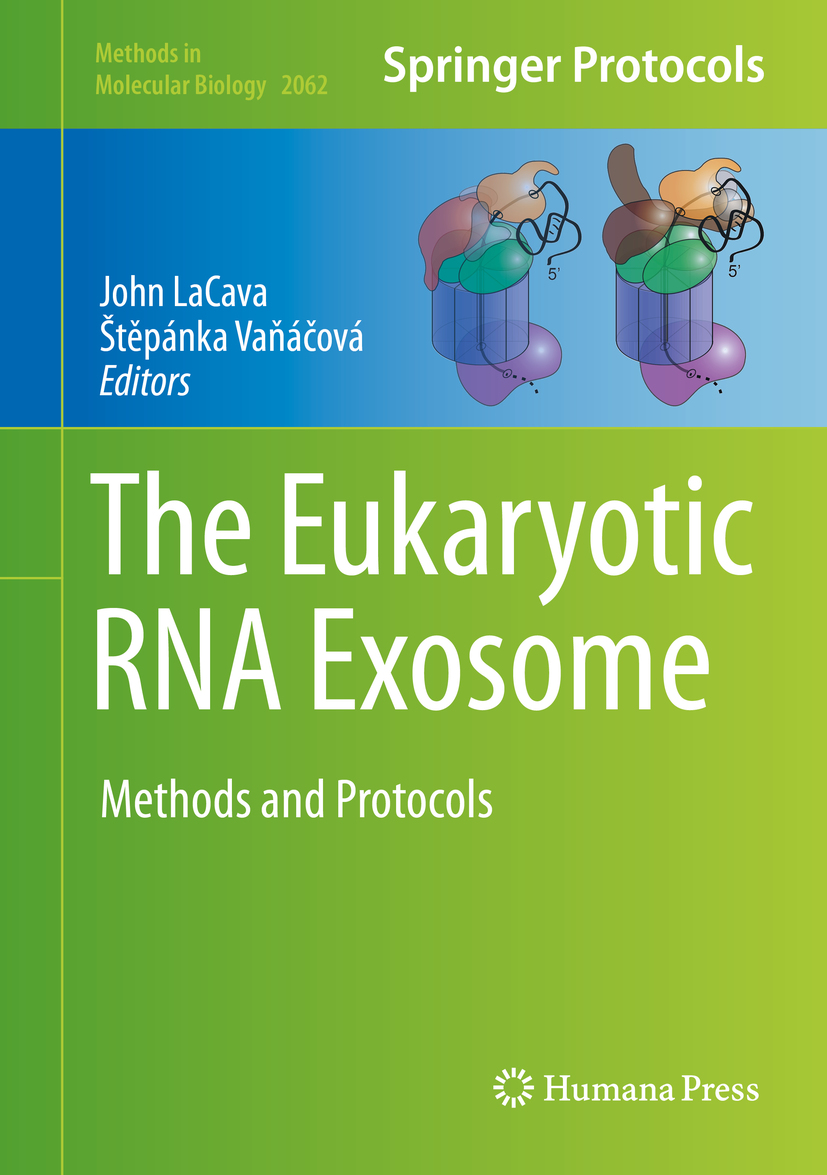Volume 2062
Methods in Molecular Biology
Series Editor
John M. Walker
School of Life and Medical Sciences, University of Hertfordshire, Hatfield, Hertfordshire, UK
For further volumes: http://www.springer.com/series/7651
For over 35 years, biological scientists have come to rely on the research protocols and methodologies in the critically acclaimedMethods in Molecular Biologyseries. The series was the first to introduce the step-by-step protocols approach that has become the standard in all biomedical protocol publishing. Each protocol is provided in readily-reproducible step-by-step fashion, opening with an introductory overview, a list of the materials and reagents needed to complete the experiment, and followed by a detailed procedure that is supported with a helpful notes section offering tips and tricks of the trade as well as troubleshooting advice. These hallmark features were introduced by series editor Dr. John Walker and constitute the key ingredient in each and every volume of theMethods in Molecular Biologyseries. Tested and trusted, comprehensive and reliable, all protocols from the series are indexed in PubMed.
Editors
John LaCava
Laboratory of Cellular and Structural Biology, The Rockefeller University, New York, NY, USA
European Research Institute for the Biology of Ageing, University Medical Center Groningen, Groningen, The Netherlands
tpnka Vaov
Central European Institute of Technology (CEITEC), Masaryk University, Brno, Czech Republic
ISSN 1064-3745 e-ISSN 1940-6029
Methods in Molecular Biology
ISBN 978-1-4939-9821-0 e-ISBN 978-1-4939-9822-7
https://doi.org/10.1007/978-1-4939-9822-7
The chapters "Mapping ExosomeSubstrate Interactions In Vivo by UV Cross-Linking" and "Protocols for Northern Analysis of Exosome Substrates and Other Noncoding RNAs" are Open Access This chapter is licensed under the terms of the Creative Commons Attribution 4.0 International License (http://creativecommons.org/licenses/by/4.0/). For further details see license information in the chapters.
Springer Science+Business Media, LLC, part of Springer Nature 2020
This work is subject to copyright. All rights are reserved by the Publisher, whether the whole or part of the material is concerned, specifically the rights of translation, reprinting, reuse of illustrations, recitation, broadcasting, reproduction on microfilms or in any other physical way, and transmission or information storage and retrieval, electronic adaptation, computer software, or by similar or dissimilar methodology now known or hereafter developed.
The use of general descriptive names, registered names, trademarks, service marks, etc. in this publication does not imply, even in the absence of a specific statement, that such names are exempt from the relevant protective laws and regulations and therefore free for general use.
The publisher, the authors, and the editors are safe to assume that the advice and information in this book are believed to be true and accurate at the date of publication. Neither the publisher nor the authors or the editors give a warranty, express or implied, with respect to the material contained herein or for any errors or omissions that may have been made. The publisher remains neutral with regard to jurisdictional claims in published maps and institutional affiliations.
This Humana imprint is published by the registered company Springer Science+Business Media, LLC, part of Springer Nature.
The registered company address is: 233 Spring Street, New York, NY 10013, U.S.A.
Preface
The RNA exosome complex was first described by Philip Mitchell, together with David Tollervey and colleagues, in 1997 (Cell, Vol. 91, 457466). In this seminal work, the exosome was described as a conserved eukaryotic RNA processing complex containing multiple 35 exoribonucleases. Since then, the field of exosome research has expanded steadily. The proliferation of the field was fueled by the ever-growing list of roles played by the exosome in (1) the precise processing of RNA precursors to mature forms and (2) the turnover of RNAs in response to quality control surveillance and homeostatic RNA decay. The exosome was found to be associated with a dizzying array of substrates and instance-specific modes of enzymatic activity. The mechanisms regulating its biochemistry were thus swiftly brought to the fore, inducing the search for adapter proteins and complexes that could impart functional selectivity to the exosome. This, alongside abundant episodes of mystery and intrigue surrounding the potential for exo- and endoribonucleolytic, as well as hydro- and phosphorolytic exosome activities. Through the functions it serves, the exosomes ubiquity extends to all the domains of life. In bacteria and archaea, cognate proteins and complexes have been shown to exhibit exosome-like activities, e.g., polynucleotide phosphorylase/the degradosome in bacteria and in archaea, a more orthologous complex, also called the exosome. Soon, it seemed that the exosome was everywhere in RNA biologyand the situation remains much the same today, 20 years on, with no sign that exosome research is yet petering out. Indeed, quite the contrary, the exosome is understood to be a valuable biomedical target.
Thus,The Eukaryotic RNA Exosome: Methods and Protocolsis intended to provide a thorough basis in contemporary exosome research for the newcomer, this both in terms of the techniques used and the general direction of the field. For those grizzled veterans of exosome research who may have stuck mostly to their favorite model organism, we have tried to provide a cross-section of protocols representing the diversity of model organisms used for exosome research, hopefully empowering broader and more frequent cross-organism comparisons within the same research team. This book begins with an introduction to RNA exosome biomedical relevance (Chapter).
tpnka and I would like to thank all the contributing authors for their enthusiasm, professionalism, and scholarship. As our first experience editing a book of this nature, with its associate learning curve and time commitment, we were lucky to have this group of contributors to work with. Indeed, there was also a special something for us in being able to edit this book together as a team. Additional thanks to Ms. Hua Jiang for proofreading the chapters and to Dr. John Walker for the guidance on how to execute our tasks effectively and the patience along the way to completion.
John LaCava
tpnka Vaov
New York, NY, USA Brno, Czech Republic

